University of Florida
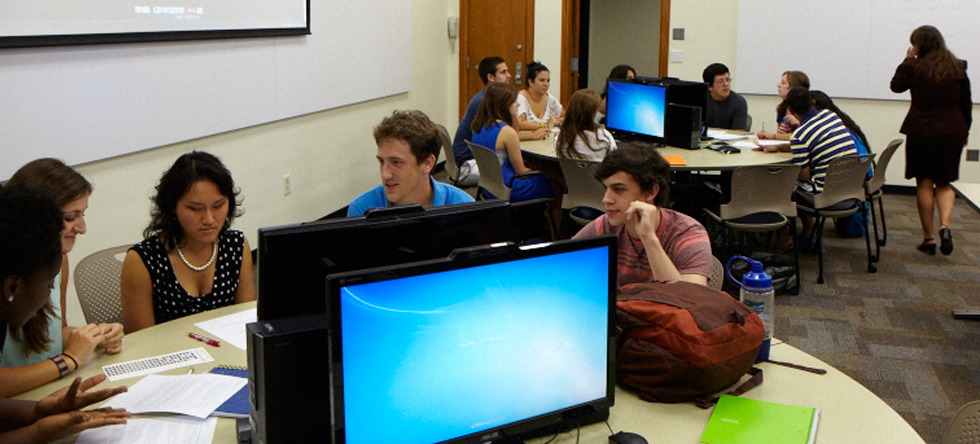
Surrounded by classrooms designed for students who sit in rows and take notes—pretty much the way it’s been for generations—Dr. Tawnya Means, director of the Center for Teaching, Learning, and Assessment at the University of Florida’s Warrington College of Business Administration, wondered if it might be time to try something different.
Her curiosity was prompted mostly by a campus-wide conviction that such passive learning isn’t always the best way to connect with today’s students.
Another question was also in play: At the University of Florida, many students learn online—an even more passive experience than the old-school lecture hall. Could a classroom be designed to engage remote students who never even step inside it?
“A number of universities are exploring active learning that encourages more student involvement,” says Dr. Means,. “We wanted to go further and see if there was a way to help remote students participate actively, too.”
SCALE-UP
Intrigued by Herman Miller’s insights into the future of education, the University of Florida sought the company’s insight as they designed an experimental classroom to better engage students both present and virtual.
Over the past few years, Herman Miller has helped dozens of universities test new teaching methods through its Learning Spaces Research Program. Universities participating in the program work with Herman Miller to develop learning studios that serve as labs for trying out promising ideas before implementing them in a broader context.
“Once we heard about Herman Miller’s research into learning space design, we knew we had found a partner,” says Dr. Means. “We were in the early planning stages for a new business building and thought this would help us make some decisions about how it should take shape.”
The University of Florida explored the SCALE-UP movement and knew it wanted to try a variation on its Gainesville campus. Pioneered at North Carolina State, SCALE-UP, which stands for Student-Centered Active Learning Environment for Undergraduate Programs, has been adopted in some capacity by well over a hundred universities across North America.
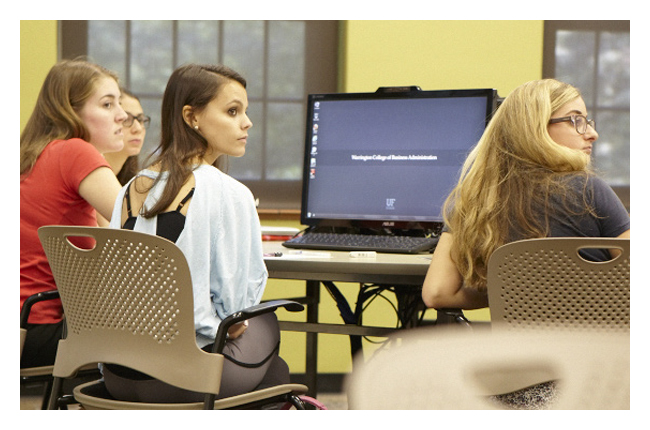
Now in place on hundreds of campuses, the SCALE-UP model dispenses with row upon row of desks.
Though the particulars vary, the SCALE-UP approach places instructors in the middle of a room and surrounds them with small teams of students at round tables. Students typically share monitors that facilitate all types of interaction—between teacher and students and among students themselves.
This setup minimizes the passive learning that takes place in conventional classrooms by encouraging instructors to roam and students to work together. A body of research suggests that SCALE-UP helps students develop the collaboration skills employers value. Moreover, the learning experience tends to be unusually dynamic. Students know they can’t just sit back and listen but must come to class prepared to participate.
ACTIVE LEARNING STUDIO
Herman Miller worked with the University of Florida to fine-tune and furnish its Active Learning Studio—the school’s name for its SCALE-UP space. Like most SCALE-UP projects, the room consists of round student tables surrounding a teacher’s station in the middle.
In this case, the round tables accommodate up to eight students each sitting in lightweight, mobile Caper chairs. Instructors use a height-adjustable Everywhere Table that allows them to either sit or stand—for a healthier balance between the two–when not moving around the classroom.
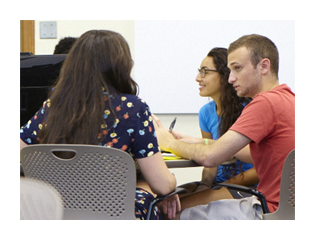
Lightweight Caper chairs, a popular choice on college campuses, work well in the informal SCALE-UP environment.
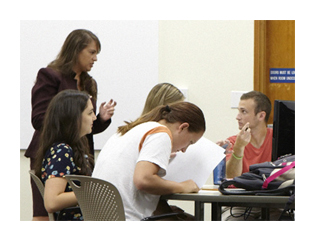
Rather than lecturing from the front of the classroom, instructors roam about to interact with students.
Another Everywhere Table is reserved for a specialist charged with troubleshooting the technology that allows everyone to share content back and forth—including remote students who log in to the Active Learning Studio. Most remote students are pursuing online degrees, though some might be studying abroad or are temporarily out of town.
Here’s an example of how the set-up might work: Let’s say a programming class is in session, and everyone is working on the same problem. While roaming the classroom to offer assistance, the instructor spots a particularly adept solution on one team’s monitor and instantly shares it with every other team—including those team members who aren’t on site.
“The Active Learning Studio has chairs for 32 students but could conceivably serve many more,” says Tom Wilkinson, the Herman Miller higher education account manager who works with the University of Florida. “It breaks down walls by allowing remote students to collaborate with their on-campus peers in real-time.”
“SCALE-UP doesn’t dismiss the role of traditional lectures, but there’s no question it equips students to work more effectively in groups,” says Derrell Jackson, who manages Herman Miller’s Learning Spaces Research Program. “At the University of Florida, that’s true no matter how far-flung those groups might be.”
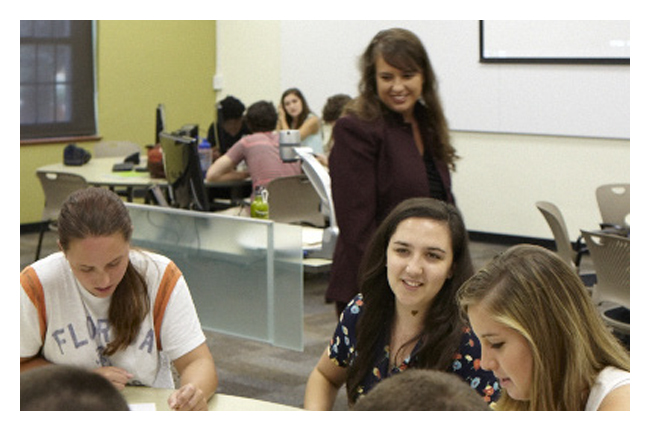
The team dynamic at the core of the SCALE-UP concept helps students develop the collaboration skills employers value.
Le Office Furniture Manufacturer
www.letbackrest.com
Address: No.12, Nanhua Road, LongJiang ,Shunde,Foshan, Guangdong, China (Mainland)
Email: sale@letbackrest.com
skype: kinmai2008

